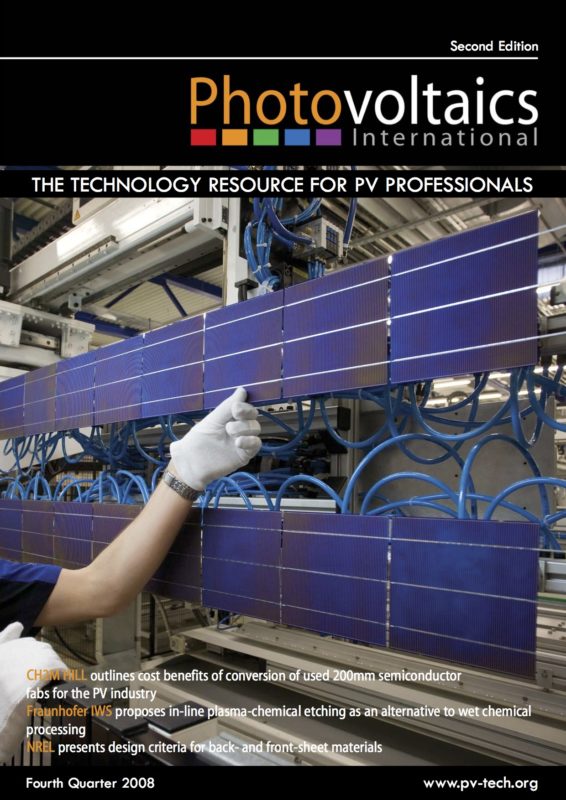By Dzmitry Hrunski, IEF-5 Photovoltaik, Forschungszentrum Jülich GmbH,; Thilo Kilper, Fraunhofer Institut Werkstoff und Strahltechnik; Uwe Stickelmann, IEF-5 Photovoltaik, Forschungszentrum Jülich GmbH; Aad Gordijn, Group Leader, IEF-5 Photovoltaik, Forschungszentrum Jülich GmbH; Wolfgang Appenzeller, IEF-5 Photovoltaik, Forschungszentrum Jülich GmbH; Wulf Grählert, Process Monitoring Group Leader, Fraunhofer Institut Werkstoff und Strahltechnik; Harald Beese, Fraunhofer Institut Werkstoff und Strahltechnik
With the thin-film silicon industry facing the problems of high-quality material deposition at high rates and narrowing deposition process windows, the “no-drift regime” is an important part of this development. In the case of the plasma-enhanced chemical vapor deposition (PECVD) of thin silicon films, the inconstancy of the concentration of silicon-containing particles (SCP) in the plasma leads to changes in deposition conditions, causing a deterioration of film properties, and, therefore, decreasing the performance of the solar cells. During the last few decades, evidence about the process instabilities has been accumulated in different laboratories. In this study, Fourier transform infrared absorption spectroscopy (FTIR), optical emission spectroscopy (OES), self-bias voltage and plasma impedance controls were applied as in-situ process diagnostics during the deposition of amorphous and microcrystalline silicon thin-films. Results of the study were then discussed.


